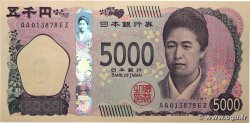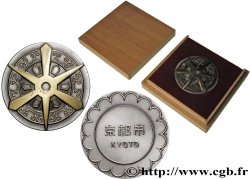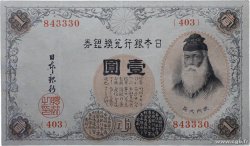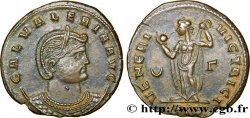Live auction - fme_993869 - JAPAN Médaille, Offerte à Noël Péri
Чтобы принять участие в торгах, вы должны войти в систему и стать подтвержденным участником аукциона. Войдите, чтобы сделать ставку. Ваш аккаунт будет подтвержден в течение 48 часов. Не ждите до закрытия торгов, чтобы зарегистрироваться.Сделав ставку на данный товар, вы вступаете в юридическое соглашение на покупку выбранного товара и нажатием кнопки «Сделать ставку» подтверждаете принятие вами условий интернет-аукционов cgb.fr.
Ставка может бить сделана только в полном эквиваленте евро. Торги закроются согласно времени, указанному в описании товара, все ставки, сделанные после закрытия торгов, учитываться не будут. Не следует откладывать предложение вашей ставки до последнего момента, так как система может не успеть обработать вашу заявку, и ваша ставка не будет принята. Более детальную информацию вы найдёте здесь: FAQ по интернет-аукционам.
Все ставки победителей подлежат комиссии 18%.
Все ставки победителей подлежат комиссии 18%.
| Оценить : | 200 € |
| Цена : | 100 € |
| Максимальная предлагаемая цена : | 122 € |
| Конец торгов : | 26 August 2025 17:49:32 |
| Участников : | 1 Участников |
Тип Médaille, Offerte à Noël Péri
Дата: n.d.
Металл: copper
Диаметр: 52 mm
Ориентация осей монеты: 12 h.
Вес: 91,1 g.
Век: lisse
Пуансон: sans poinçon
Комментарии о состоянии
Patine hétérogène avec quelques traces d’usure. Présence de taches d’oxydation
Лицевая сторона
Аверс: легенда: (LÉGENDE EN JAPONAIS).
Аверс: описание: Légende circulaire entourant en médaillon dans lequel se trouve un miroir à trois lions accosté de part et d’autre de fleurs et feuilles de sakura.
Обратная сторона
Реверс: легенда: * PRESENTED TO PROF. NOEL PERI* - NIPPON UNGAKUKMAI.
Реверс: Описание: Légende circulaire et lyre posée sur une couronne de feuilles de laurier.
Комментарий
Cette médaille, ayant conservée une partie de sa boîte d’origine, fut remise à Noël Péri (1865-1922), lorsqu’il était professeur de musique au conservatoire d’Ueno.
Minoré le 26 septembre 1886, sous-diacre le 24 septembre 1887, diacre le 25 février 1888, il fut ordonné prêtre le 8 juillet suivant. Destiné à la mission du Japon septentrional, le 28 novembre il disait adieu à sa famille et partit à Marseille, où il devait s'embarquer sur le Melbourne" pour le Japon.
Il débarqua à Yokohama en janvier 1889. Comme tout missionnaire, il commença par l'étude de la langue et il y fit de tels progrès qu'au bout d'une année, sans doute avec l'aide de lettrés japonais, il écrivit de petites brochures pour présenter le christianisme. En octobre 1890, son évêque l'envoya à Matsumoto, ville de la province de Nagano. Au bout de deux ans de séjour, on le rappela à Tokyo pour y diriger l'orphelinat de Sekiguchi. Il y resta peu de temps. En janvier 1893, il lui fallut retourner à Matsumoto.
Les années de 1902 à 1907 furent pour lui des années de labeur acharné et fécond. Il revint à l'étude du Nô, puis des confrères qui partageaient ses vues et lui-même formèrent le projet de publier une revue trimestrielle, en français. Telle fut l'origine des "Mélanges japonais" qui parurent de 1904 à 1910. La contribution la plus importante du Père Péri fut une série d'articles intitulés "Bukkyô Seiten" (Livres Sacrés du bouddhisme). En septembre 1906, à la demande du Père Robert, procureur des Missions Étrangères, qui résidait à Shanghai, il accepta de se rendre dans cette ville pour faire du journalisme. Pendant quelques mois, il collabora régulièrement à "L'Écho de Chine", il envoya des correspondances à "L'Avenir du Tonkin" et dans la Revue de Paris (1er et 15 juin 1907) des articles sur "l'éducation nouvelle en Chine". À Hanoi, l'École Française d'Extrême Orient désirait se l'attacher : le 9 mars 1907, il fut nommé "pensionnaire".
Péri Noël ne retourna jamais en France. Il meurt le 25 juin 1922 à Halong (Hanoï).
Source : IRFA.
This medal, which has retained part of its original box, was awarded to Noël Péri (1865-1922), when he was a music professor at the Ueno Conservatory..
Minorized on September 26, 1886, subdeacon on September 24, 1887, deacon on February 25, 1888, he was ordained a priest on the following July 8. Destined for the mission to northern Japan, on November 28 he said goodbye to his family and left for Marseille, where he was to embark on the Melbourne for Japan..
He landed in Yokohama in January 1889. Like any missionary, he began by studying the language and made such progress that after a year, probably with the help of Japanese scholars, he wrote small brochures to present Christianity.. In October 1890, his bishop sent him to Matsumoto, a city in Nagano province.. After two years of stay, he was recalled to Tokyo to run the Sekiguchi orphanage.. He stayed there for a short time. In January 1893, he had to return to Matsumoto.
The years from 1902 to 1907 were years of hard and fruitful work for him.. He returned to the study of Noh, then colleagues who shared his views and he himself formed the project of publishing a quarterly review, in French.. This was the origin of the \\\"Japanese Miscellanies\\\" which appeared from 1904 to 1910.. Father Peri's most important contribution was a series of articles entitled \\\"Bukkyô Seiten\\\" (Sacred Books of Buddhism). In September 1906, at the request of Father Robert, procurator of the Foreign Missions, who resided in Shanghai, he agreed to go to this city to do journalism.. For several months, he regularly collaborated with \\\"L'Écho de Chine\\\", he sent correspondence to \\\"L'Avenir du Tonkin\\\" and in the Revue de Paris (June 1 and 15, 1907) articles on \\\"new education in China\\\". In Hanoi, the French School of the Far East wanted to attach him: on March 9, 1907, he was named \\\"boarder\\\".
Peri-Noel never returned to France. He died on June 25, 1922 in Halong (Hanoi).
Source: IRFA
Minoré le 26 septembre 1886, sous-diacre le 24 septembre 1887, diacre le 25 février 1888, il fut ordonné prêtre le 8 juillet suivant. Destiné à la mission du Japon septentrional, le 28 novembre il disait adieu à sa famille et partit à Marseille, où il devait s'embarquer sur le Melbourne" pour le Japon.
Il débarqua à Yokohama en janvier 1889. Comme tout missionnaire, il commença par l'étude de la langue et il y fit de tels progrès qu'au bout d'une année, sans doute avec l'aide de lettrés japonais, il écrivit de petites brochures pour présenter le christianisme. En octobre 1890, son évêque l'envoya à Matsumoto, ville de la province de Nagano. Au bout de deux ans de séjour, on le rappela à Tokyo pour y diriger l'orphelinat de Sekiguchi. Il y resta peu de temps. En janvier 1893, il lui fallut retourner à Matsumoto.
Les années de 1902 à 1907 furent pour lui des années de labeur acharné et fécond. Il revint à l'étude du Nô, puis des confrères qui partageaient ses vues et lui-même formèrent le projet de publier une revue trimestrielle, en français. Telle fut l'origine des "Mélanges japonais" qui parurent de 1904 à 1910. La contribution la plus importante du Père Péri fut une série d'articles intitulés "Bukkyô Seiten" (Livres Sacrés du bouddhisme). En septembre 1906, à la demande du Père Robert, procureur des Missions Étrangères, qui résidait à Shanghai, il accepta de se rendre dans cette ville pour faire du journalisme. Pendant quelques mois, il collabora régulièrement à "L'Écho de Chine", il envoya des correspondances à "L'Avenir du Tonkin" et dans la Revue de Paris (1er et 15 juin 1907) des articles sur "l'éducation nouvelle en Chine". À Hanoi, l'École Française d'Extrême Orient désirait se l'attacher : le 9 mars 1907, il fut nommé "pensionnaire".
Péri Noël ne retourna jamais en France. Il meurt le 25 juin 1922 à Halong (Hanoï).
Source : IRFA.
This medal, which has retained part of its original box, was awarded to Noël Péri (1865-1922), when he was a music professor at the Ueno Conservatory..
Minorized on September 26, 1886, subdeacon on September 24, 1887, deacon on February 25, 1888, he was ordained a priest on the following July 8. Destined for the mission to northern Japan, on November 28 he said goodbye to his family and left for Marseille, where he was to embark on the Melbourne for Japan..
He landed in Yokohama in January 1889. Like any missionary, he began by studying the language and made such progress that after a year, probably with the help of Japanese scholars, he wrote small brochures to present Christianity.. In October 1890, his bishop sent him to Matsumoto, a city in Nagano province.. After two years of stay, he was recalled to Tokyo to run the Sekiguchi orphanage.. He stayed there for a short time. In January 1893, he had to return to Matsumoto.
The years from 1902 to 1907 were years of hard and fruitful work for him.. He returned to the study of Noh, then colleagues who shared his views and he himself formed the project of publishing a quarterly review, in French.. This was the origin of the \\\"Japanese Miscellanies\\\" which appeared from 1904 to 1910.. Father Peri's most important contribution was a series of articles entitled \\\"Bukkyô Seiten\\\" (Sacred Books of Buddhism). In September 1906, at the request of Father Robert, procurator of the Foreign Missions, who resided in Shanghai, he agreed to go to this city to do journalism.. For several months, he regularly collaborated with \\\"L'Écho de Chine\\\", he sent correspondence to \\\"L'Avenir du Tonkin\\\" and in the Revue de Paris (June 1 and 15, 1907) articles on \\\"new education in China\\\". In Hanoi, the French School of the Far East wanted to attach him: on March 9, 1907, he was named \\\"boarder\\\".
Peri-Noel never returned to France. He died on June 25, 1922 in Halong (Hanoi).
Source: IRFA








 Cообщить об ошибке
Cообщить об ошибке Распечатать страницу
Распечатать страницу Отправить мой выбор
Отправить мой выбор Задать вопрос
Задать вопрос Consign / sell
Consign / sell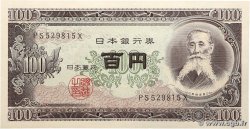
 Информация
Информация
